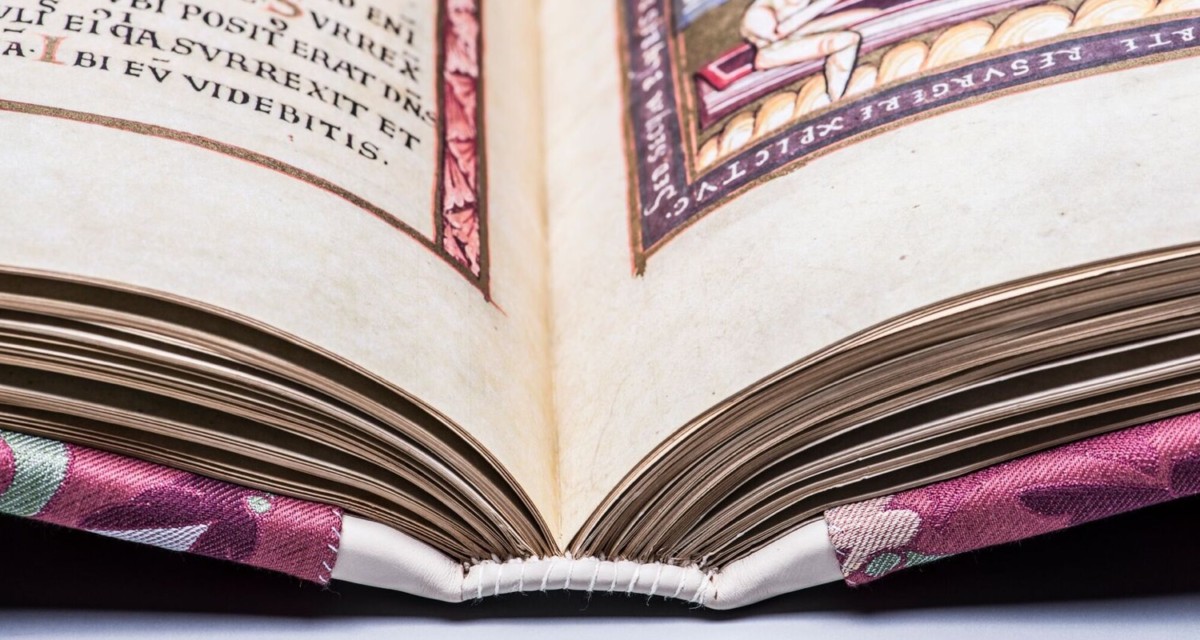The manuscript includes one hundred and eight parchment folios, out of which twenty six pages are illuminated with portraits of the Evangelists, the genealogy of Jesus Christ, four types from the Old Testament and St. Wenceslas, the Czech Patron Saint. Its visual components rank it among the most precious illuminated manuscripts of the second half of the 11th century in Europe. The biggest portion of the manuscript was written by one scribe. The back plate of the Codex is also coated with fabric with a mandorla of Christ in Majesty sewn to it. According to recent research the Vyšehrad Codex was written in the environment of Bavarian monastery school with motifs of regensburg school of art. The place of origin was probably the Regensburg scriptorium Emmerames.
Codex was probably passed to Vratislav II. During the corronation at Prague Castle on 15 June 1085. Apparently, the King kept the Codex in his residence, Vyšehrad, after which the Codex got its name. In 1228, when there was another royal coronation in Prague, it may have been transferred to the Metropolitan Library of St. Vitus. Around 1619 it was taken to Dlouhá Ves to be saved from Calvinists. Since the second half of the 18th century the Codex has been kept in Klementinum, apart from the 2nd World War, when it was transferred to Karlštejn.
In 2005, the Vyšehrad Codex was classified as a national cultural monument of the Czech Republic. Currently, there is a facsimile of The Codex from 2012 displayed in Klementinum.


